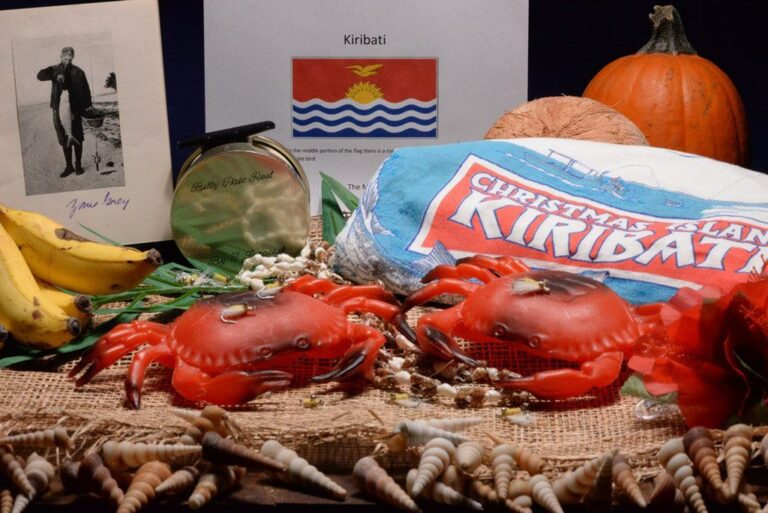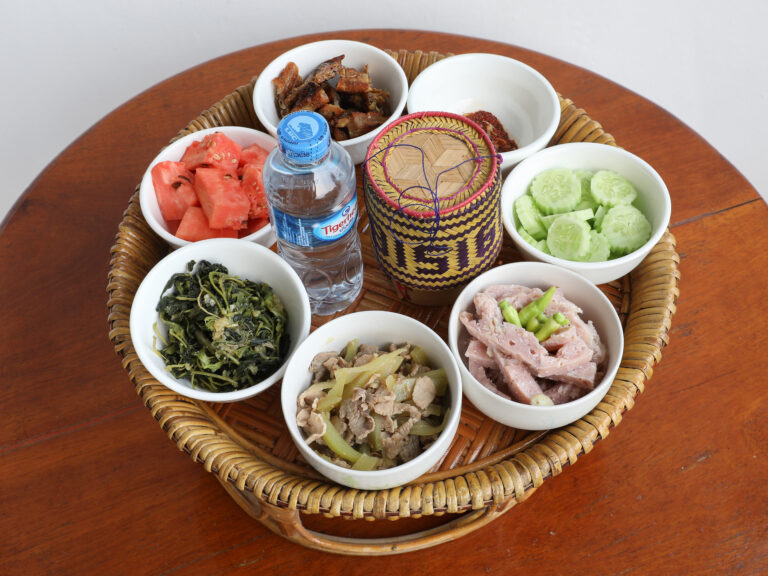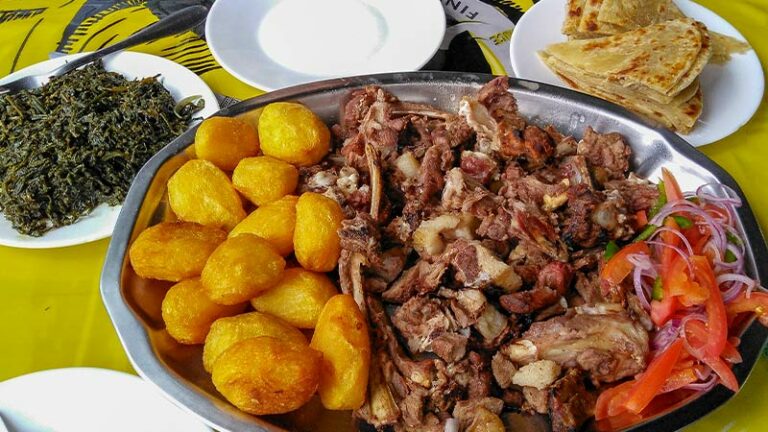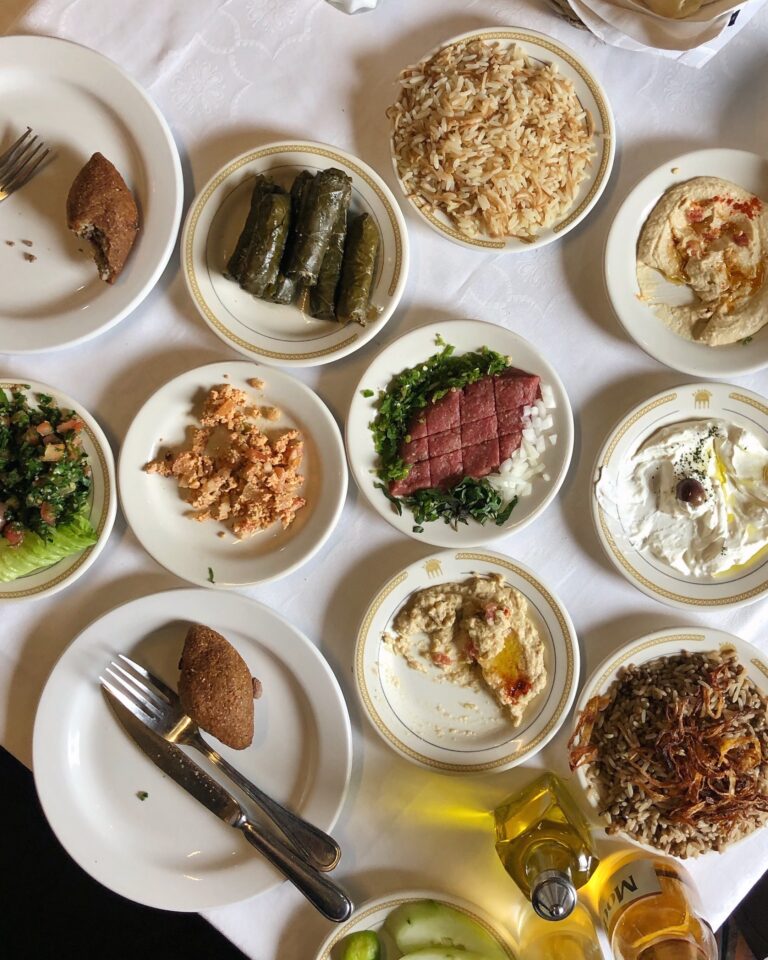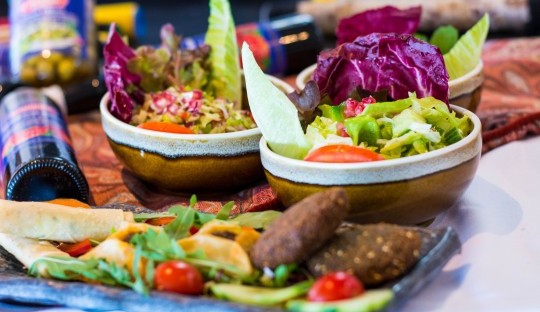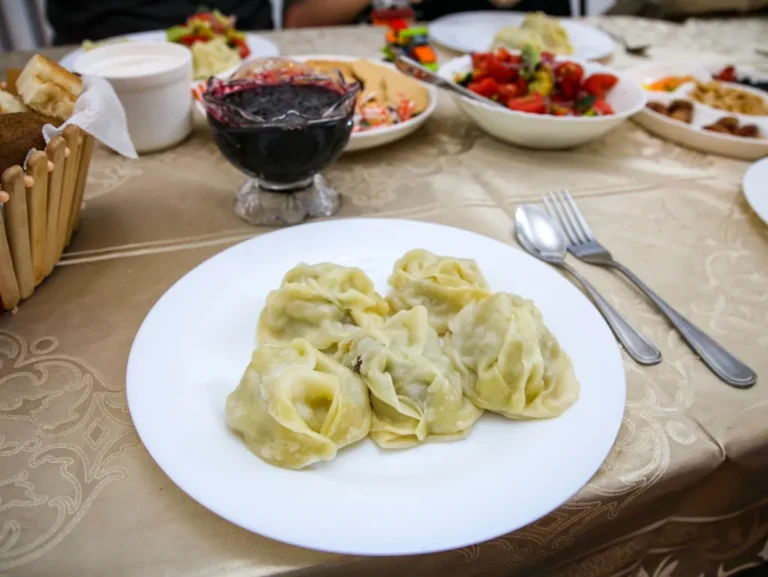Introduction: Discovering Kiribati cuisine
Kiribati is an island nation located in the central Pacific Ocean. Its cuisine is a reflection of its location, consisting mainly of seafood, coconuts, and pandanus leaves. Kiribati’s traditional dishes are simple yet flavorful, making use of locally sourced ingredients. If you’re planning to visit Kiribati, here are some must-try dishes that will give you a taste of the country’s culinary culture.
A taste of the sea: Ika Mata
Ika Mata is a popular seafood dish in Kiribati. It’s made by marinating raw fish in lime juice and coconut cream, then adding chopped onions, tomatoes, and cucumbers. The acid in the lime juice “cooks” the fish, giving it a firm texture and a tangy flavor. Ika Mata is often served as an appetizer or a light meal, accompanied by breadfruit or taro chips.
A staple food: Te Bwebwe ni Kiribati
Te Bwebwe ni Kiribati is a type of pudding made from mashed bananas, coconut cream, and grated pandanus leaves. It’s a staple food in Kiribati, and is often served as a dessert or a snack. The pudding has a smooth and creamy texture, with a hint of pandanus flavor. Te Bwebwe ni Kiribati is also a symbol of hospitality, as it’s often offered to guests as a welcoming gesture.
A sweet treat: Maneaba ni Maire
Maneaba ni Maire is a sweet and sticky snack made from roasted coconut flesh and sugar. The coconut flesh is grated, then mixed with sugar and cooked over low heat until it forms a thick, caramel-like paste. The mixture is then shaped into small balls and wrapped in pandanus leaves. Maneaba ni Maire is a popular snack in Kiribati, and is often served during special occasions such as weddings and festivals.
A festive dish: Lobster in coconut cream
Lobster in coconut cream is a special dish that’s typically served during festive occasions such as Christmas and New Year’s Eve. The dish consists of fresh lobster meat cooked in coconut cream, with onions, garlic, and peppers added for flavor. The dish has a rich and creamy texture, with a slight sweetness from the coconut. Lobster in coconut cream is a luxurious treat that’s sure to impress your taste buds.
Conclusion: Delving into Kiribati’s culinary culture
Kiribati’s cuisine is a reflection of its location and culture. Its dishes are simple yet flavorful, making use of locally sourced ingredients such as seafood, coconuts, and pandanus leaves. By trying these must-try dishes, you’ll not only satisfy your taste buds but also get a glimpse into Kiribati’s culinary culture. So, when you’re in Kiribati, make sure to try Ika Mata, Te Bwebwe ni Kiribati, Maneaba ni Maire, and Lobster in coconut cream.



